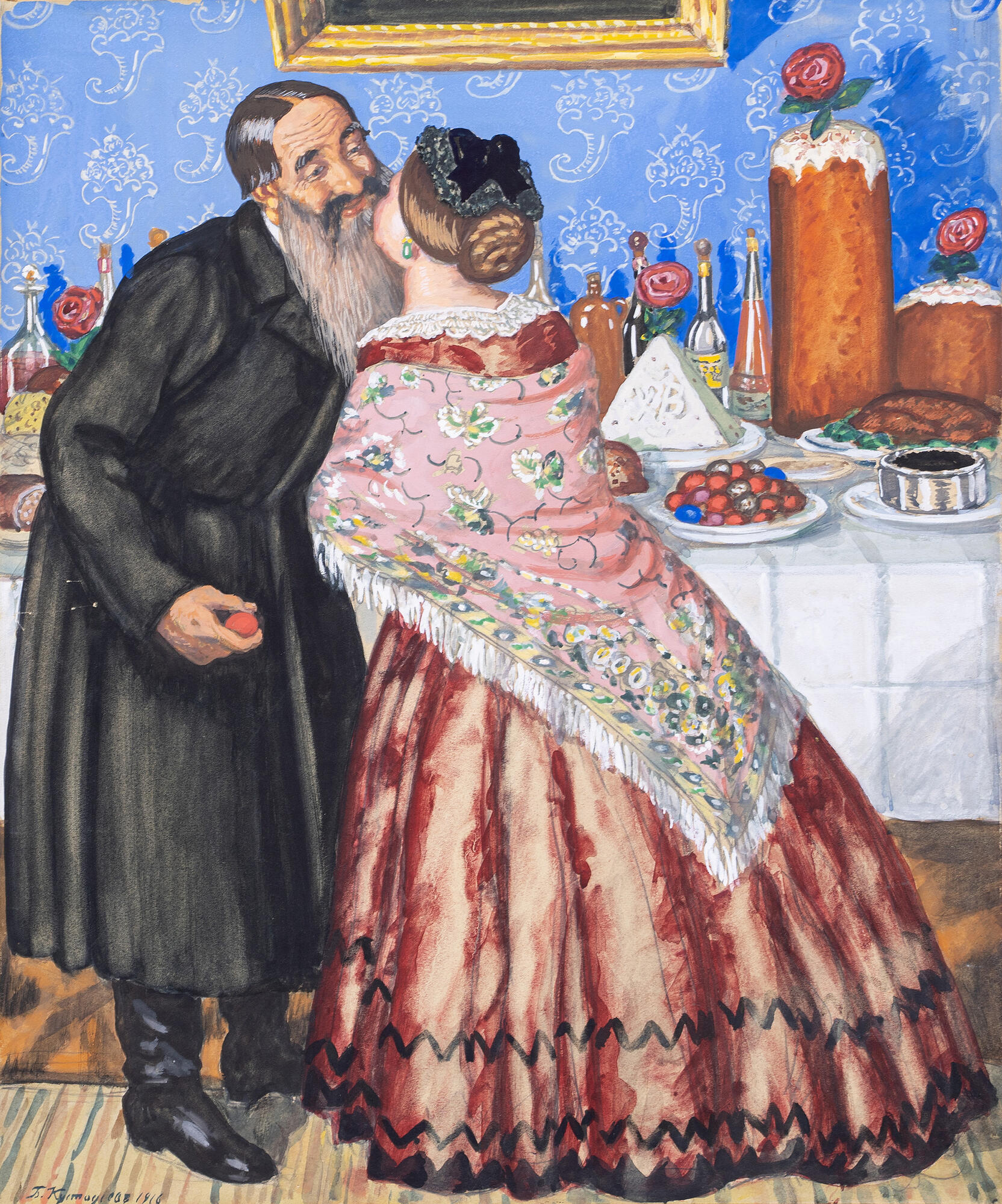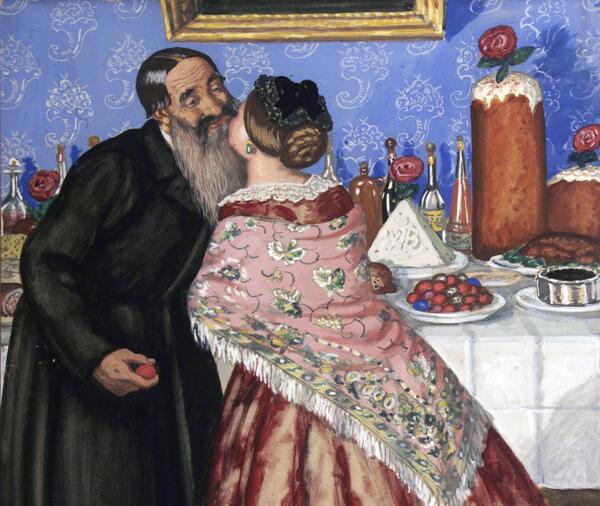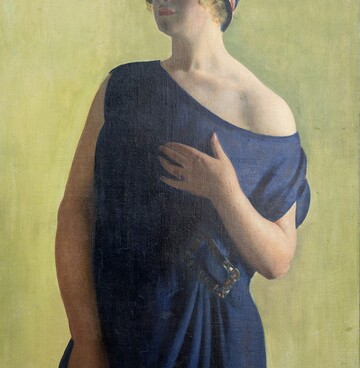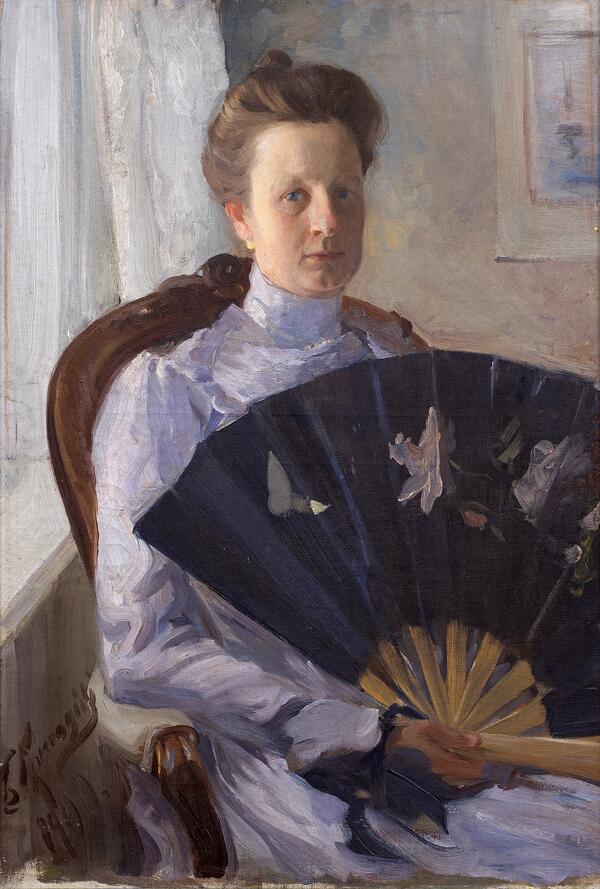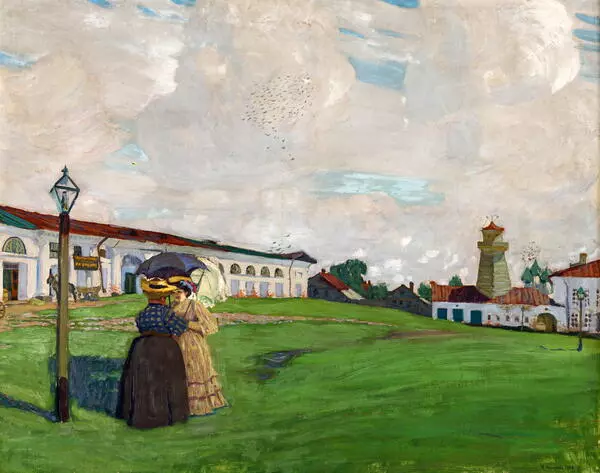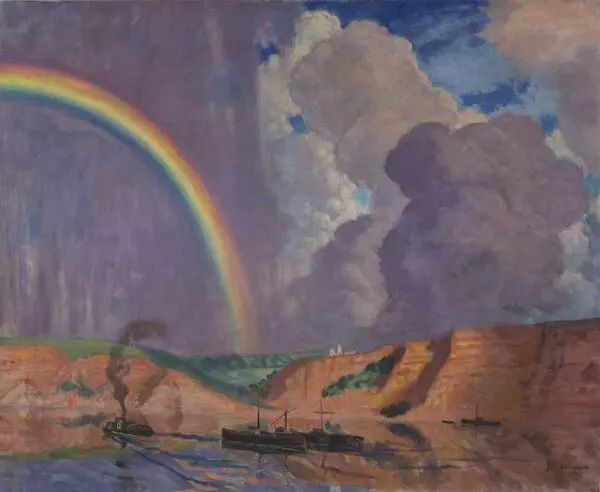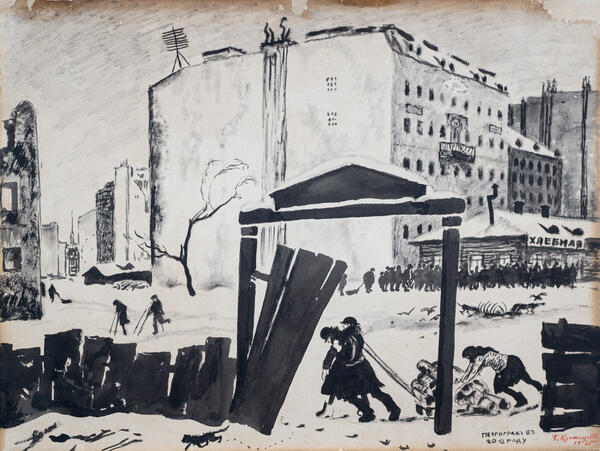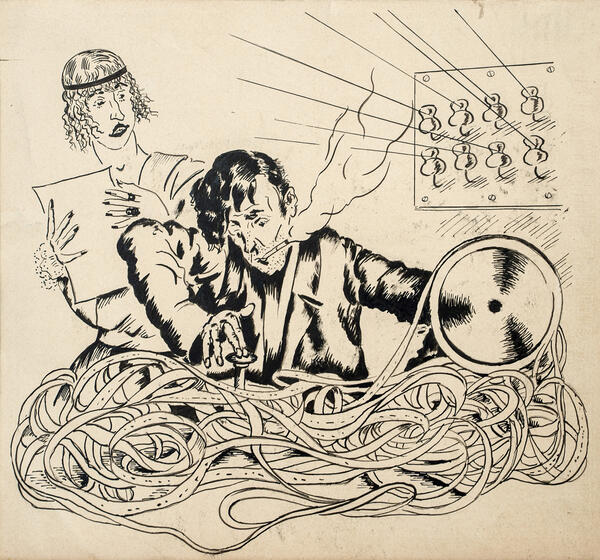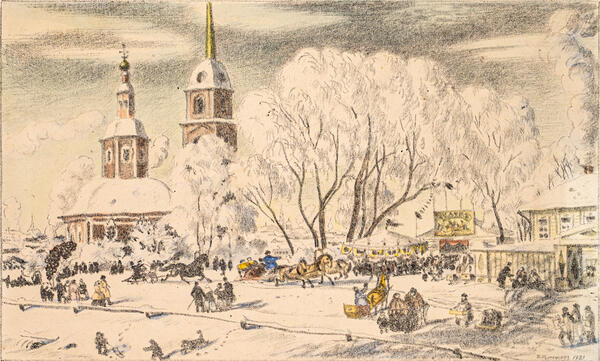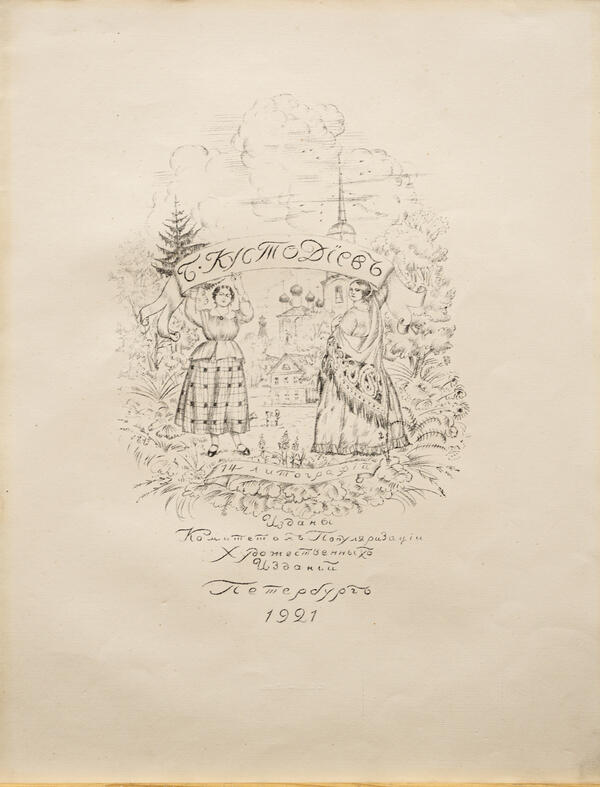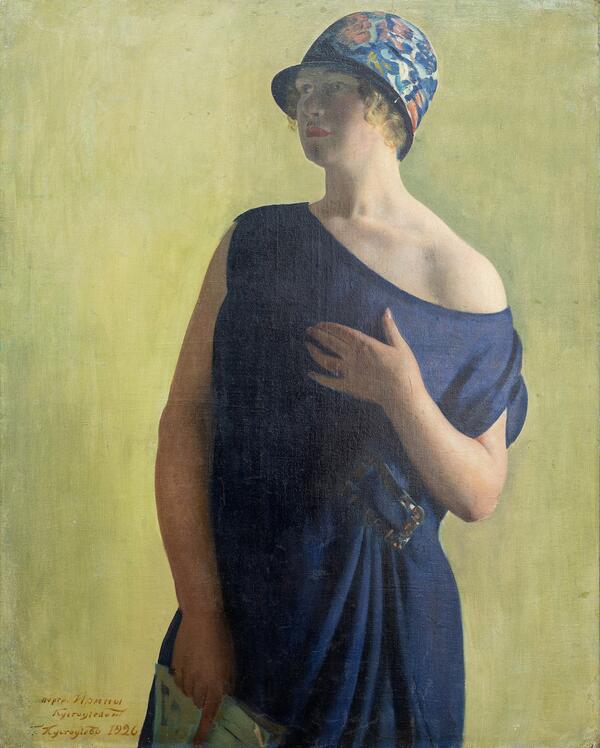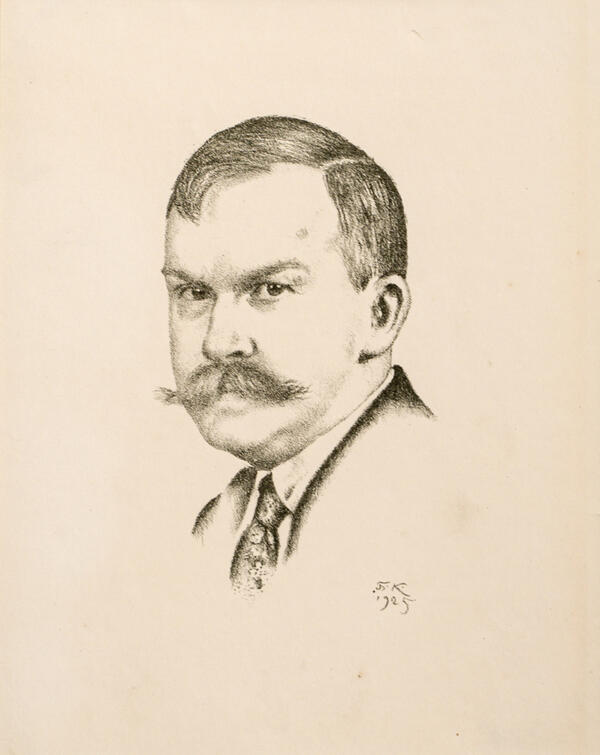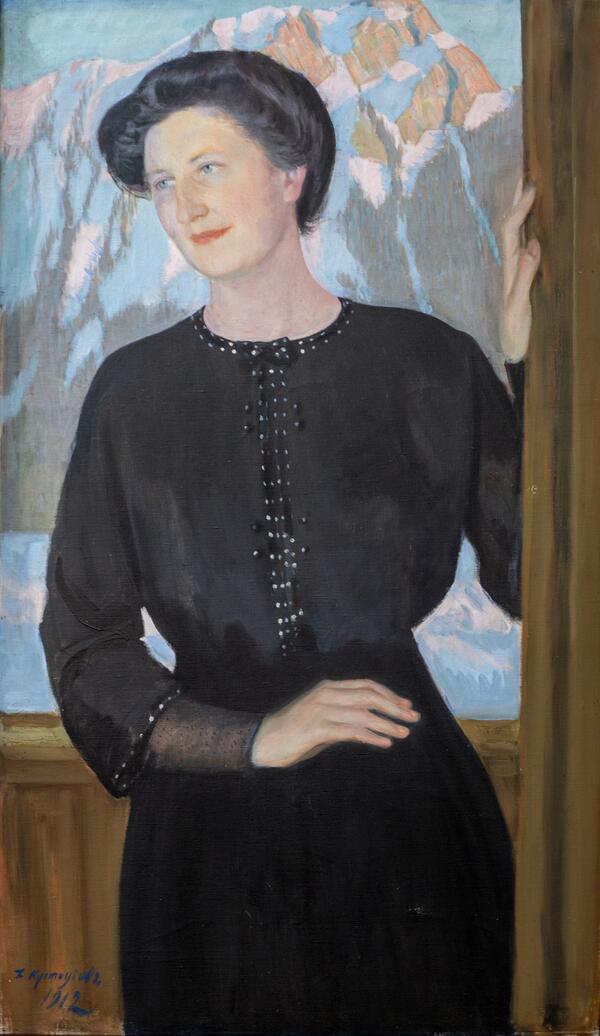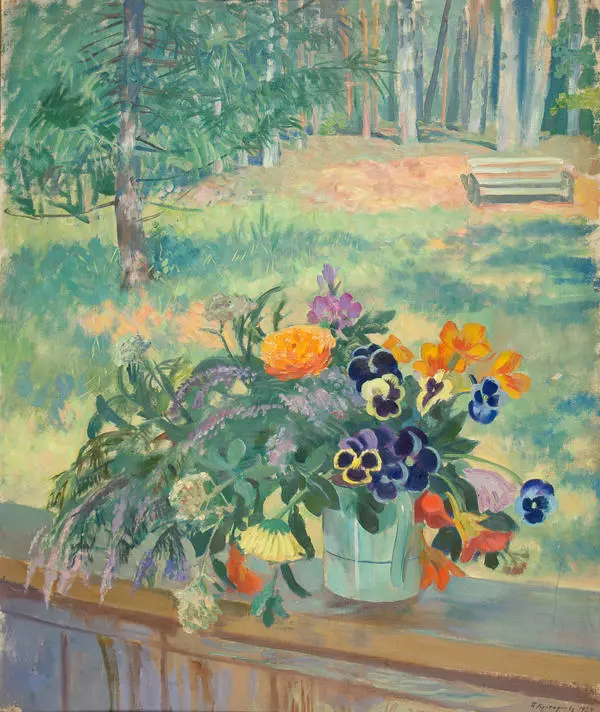“Easter Rite. Kiss of Peace” is a painting that is distinctive for Kustodiev’s work. For the connoisseurs of painting around the world, Kustodiev is first of all the creator of outstanding works which describe the life of merchants and peasants in pre-revolutionary Russia. An attentive observer and talented artist, Kustodiev created a veritable encyclopedia of merchant life in his works. He is often referred to as “the portrayer of Russian provincial life.”
The picture was painted in 1916, in the midst of the First World War. But the artist paints a bright canvas, on which cheerful colors set up a festive mood at once. The viewer sees a dining room of a merchant’s house, where the smiling owner is greeted by his smartly dressed wife. On the occasion of the holiday, she is wearing a satin dress and a luxurious shawl with a rose pattern on her shoulders. The kiss of peace is one of the essential holiday rites, it is an exchange of a triple kiss of greeting, with a solemn cry of “Christ is risen!” and a response of “Indeed, He is risen!” The merchant holds a red egg in his hand, the symbol of Easter. During Easter week people exchanged such eggs, with the wealthy giving each other glass, porcelain eggs, or even those carved from semi-precious stones. Behind the merchant’s table is a lavishly set table. There are tall Easter cakes with a paper rose on top, and a dazzling cottage cheese Easter paskha, a plate full of painted eggs, a whole row of bottles with liqueurs and tinctures, goose, a dish of black caviar… The artist managed to convey the mood of the main Orthodox holiday in a small, but memorable work.
“Easter Rite. Kiss of Peace” is executed in tempera
on paper glued to cardboard. The word “tempera” comes from the Latin temperare
— to mix. It is the name of water-based paints made using dry powdered
pigments. Emulsions serve as a binder — natural (water-soluble yolk of chicken
eggs or whole eggs) or artificial (drying oils in aqueous glue solution).
Tempera has been known in Russia since the early Middle Ages and used primarily
in iconography. Boris Mikhailovich Kustodiev often turned to this technique and
left for posterity many sketches of stage sets, costumes and makeup for plays,
as well as many drawings on his favorite “merchant” themes.
